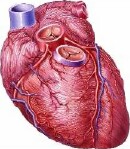Embryonic Stem Cells Turned Into Three Types of Heart Cells
When transplanted into mice, they improved heart function, researchers report.
By Amanda Gardner
HealthDay Reporter
|
E-mail this article
Subscribe to news
Printer friendly version
|

(SOURCES: Gordon Keller, Ph.D., director, McEwen Centre for Regenerative Medicine, University Health Network, Toronto; Paul R. Sanberg, Ph.D., director, Center for Aging and Brain Repair, University of South Florida College of Medicine, Tampa; April 24, 2008, Nature)
WEDNESDAY, April 23 (HealthDay News) -- A multinational team of researchers has succeeded in turning human embryonic stem cells into three types of human heart muscle cells.
When transplanted, the cells also improved heart function in mice.
The findings have a number of implications, the most immediate of which would be to use the cells to test drugs.
"We have now a supply of human heart cells for biotech and drug companies to start testing the beneficial effects of drugs or the toxic effects of drugs," said Gordon Keller, senior author of a paper published in this week's issue of Nature. "There are really no roadblocks in beginning to set up such tests."
Researchers may also be able to use the cells to make artificial heart tissue, which could then be transplanted into an actual human heart.
"It's not clear how effective injecting cells directly into the heart ever will be," said Keller, who is director of the McEwen Centre for Regenerative Medicine at University Health Network in Toronto. "A huge advantage we have is that these unique progenitor cells can make three of the major types of cells in the heart, so we hope we can simply seed these progenitor cells onto scaffolding and make what might be an artificial piece of heart tissue and possibly transplanting such small pieces of tissue, and engrafting them into the heart, would be more effective than transplanting the cells themselves."
Keller's lab had previously succeeded in coaxing cardiac cells out of mouse embryonic cells.
For this study, the team used similar principles, applying specific growth factors at different stages of development, but in human embryonic stem cells.
"They're showing that different 'recipes' can induce different types of cardiac cells," said Paul Sanberg, director of the Center for Aging and Brain Repair at the University of South Florida College of Medicine in Tampa.
In this way, the researchers were able to isolate heart progenitor cells then coax them into three different types of heart cells, called cardiomyocytes, which make up functioning heart muscle.
"Now we have our hands on a cell that doesn't have the same developmental potential as embryonic stem cells but can still make three of the major types of heart cells," Keller explained. "When we have these cells in isolation, we have a better handle on directing their pathway to cells that beat, or other [cardiac] cells. That's much more difficult when we haven't isolated the cells."
Also, when these cells were transplanted, they didn't form tumors, which often happens when a group of cells is more mixed. "In essence, we have isolated the most immature human heart cells, and we think we can control these cells much better than we would if we were starting with embryonic stem cells," Keller said.
The findings will help researchers better understand how the heart develops in humans, but therapeutic applications are still a ways off.
"It's important that we understand the basic biology," Sanberg said. "But it's still going to be a while till we see this in the clinic."
More information
The National Institutes of Health has more on stem cells.
Copyright © 2008 ScoutNews, LLC. All rights reserved. 
HealthDayNews articles are derived from various sources and do not reflect federal policy. healthfinder.gov does not endorse opinions, products, or services that may appear in news stories. For more information on health topics in the news, visit the healthfinder.gov health library.